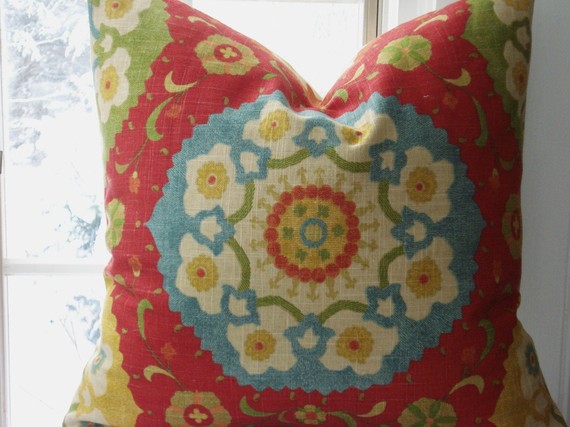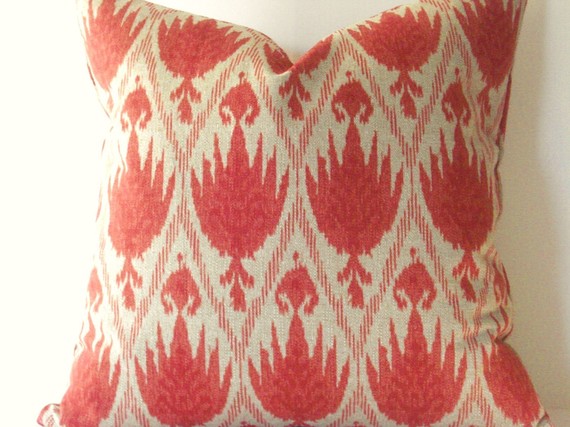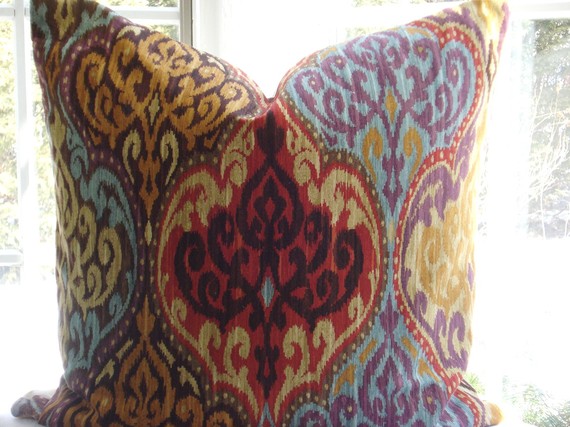Perfectly Imperfect: Ethnic Designs in Modern Interiors
Over the past couple of years two kinds of traditional textiles from non-western cultures have been imitated by fabric designers for upholstery and home decor markets: Suzanis and Ikats. Both of these ethnic influences appear very fresh in modern interiors.
Suzanis are ornately embroidered textiles made in several Central Asian countries. These elaborately decorated cloths were presented as part of a bride’s dowry on her wedding day. The detailed designs of suzanis are very organic with motifs of leaves, vines, flowers and fruit. Floral-form medallions of suzanis have been the most imitated design elements.
Ikats are woven textiles from Indonesia. The threads used to make an ikat are bound and then dyed (same principle as tie dye) before weaving. When the threads are woven into fabric, the color variations created by the resistance dyeing make soft-edged, yet graphic, patterns in the finished fabric.
Both of these ethnic textile forms are being imitated by the designers of contemporary upholstery fabrics. The designs are graphic, but not hard-edged. The designs generally symmetrical in concept but intentionally imperfect in execution. Shapes are not razor-sharp, but irregular and seem to have been created by a rustic, tribal craftsman.
When these fabrics are used in modern decor they seem to serve as an antidote to the high-tech world we live in; they are not slick and hard-edged. They add color and interest like a touch of exotic spice to a traditional dish. More significantly, I think, these patterns can humanize a space by showcasing the beauty of that which is not perfect. They serve as a “Gods square*” to a room.
*Okay, this is another bit textile trivia: in some traditional religious communities handmade quilts are never made perfectly symmetrical. One quilt square is intentionally different from the pattern of the rest of the quilt. This different square is called the “God’s square” because only God can make something perfect. It would be considered an act of hubris for humans to try to make something perfect.




Recent Comments